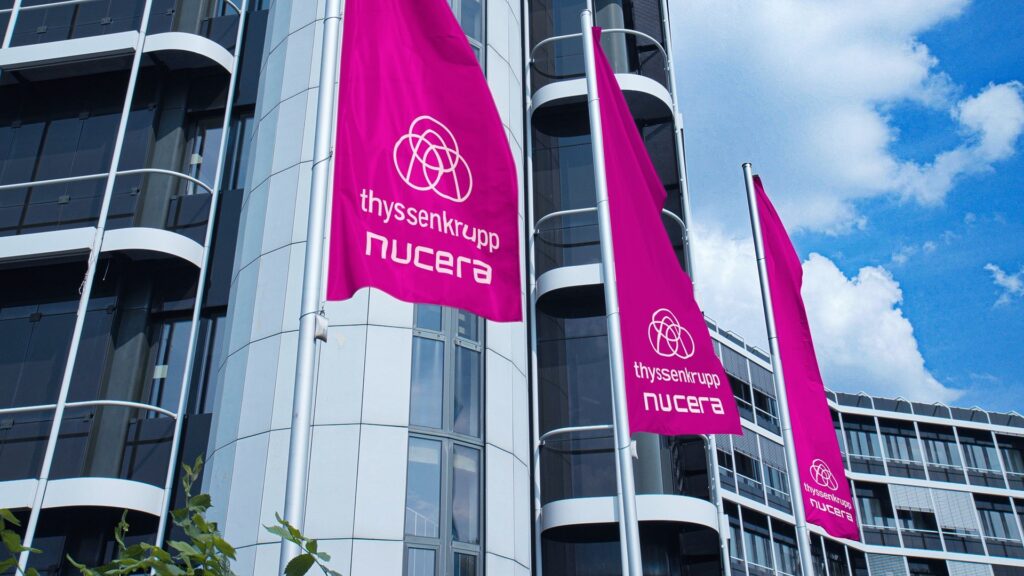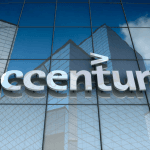thyssenkrupp Nucera Acquires Green Hydrogen Systems Assets

- Acquisition secures pressurized alkaline water electrolysis technology operating at up to 35 bar, critical for industrial-scale hydrogen use.
- Transaction completed after regulatory approval and court consent, financed entirely from thyssenkrupp nucera’s liquidity.
- Strengthens Europe’s industrial positioning in green hydrogen technology amid global competition for clean energy leadership.
A Strategic Bet on Hydrogen’s Next Phase
Thyssenkrupp nucera has finalized the acquisition of core technology assets from the insolvent Danish company Green Hydrogen Systems (GHS), in a move designed to reinforce its standing in the global electrolyser market. The deal, cleared by regulators and overseen by a court-appointed administrator, includes intellectual property and a full-scale test facility in Skive, Denmark.
The purchase, valued in the high single-digit millions of euros and financed from existing liquidity, marks a decisive step in expanding nucera’s technology portfolio. The German company, already a leading supplier of alkaline water electrolysis (AWE), now gains access to advanced pressurized systems capable of producing hydrogen at operating pressures of up to 35 bar.
Why Pressurized Technology Matters
Hydrogen production under higher pressure is not a technical footnote. For industries such as chemicals, refining, and steelmaking—sectors central to Europe’s decarbonisation goals—compressed hydrogen is often a prerequisite. Producing it directly at pressure reduces the need for costly downstream compression, improving efficiency and lowering energy consumption.
By integrating GHS’s pressurized AWE solutions, thyssenkrupp nucera can address a wider set of industrial applications, positioning itself as a more versatile supplier at a time when global competition in electrolysis is intensifying.
Navigating a Consolidating Market
The collapse of Green Hydrogen Systems had raised concerns about the stability of Europe’s hydrogen technology sector, where many firms are scaling up rapidly in an uncertain market. For thyssenkrupp nucera, the acquisition represents both consolidation and opportunity.
The deal ensures that years of Danish R&D are not lost, while enabling nucera to fold the technology into its broader innovation pipeline. The integration of GHS’s Skive facility provides a ready-made testbed, reducing lead times in product development.
Financing and Governance Dimensions
Notably, the transaction required no external financing—a signal to investors that thyssenkrupp nucera maintains balance sheet flexibility while pursuing strategic acquisitions. Governance also played a central role: approvals from competition authorities and the insolvency court were prerequisites, underlining the degree of regulatory oversight in Europe’s clean-tech sector.
Such regulatory involvement reflects broader European priorities. The EU’s Green Deal Industrial Plan and the bloc’s emphasis on strategic autonomy in clean energy technology have put hydrogen firmly on the political and industrial agenda. Moves like this acquisition feed into that narrative, helping secure Europe’s industrial base against overseas competitors.
RELATED ARTICLE: thyssenkrupp nucera Supplies the Electrolyzers for H2 Green Steel to Build One of the Largest Integrated Green Steel Plants in Europe
Implications for Executives and Investors
For corporate leaders and investors, the deal highlights several takeaways:
- Technology pathways are diverging. Companies with flexible electrolysis portfolios—covering both standard and pressurized solutions—will be better placed to serve diverse industrial customers.
- Consolidation is accelerating. Smaller firms with strong IP but limited scale remain vulnerable, while established players like nucera can absorb them to gain capabilities.
- Policy risk is material. Hydrogen development depends not just on technology, but also on the stability of government support and regulatory frameworks.
A Broader Industrial Context
Thyssenkrupp nucera’s acquisition comes as governments in Europe, the U.S., and Asia are scaling subsidies and contracts for difference to accelerate clean hydrogen. The German company is already involved in multiple gigawatt-scale projects worldwide, and this latest move strengthens its ability to compete for contracts that require high-performance, pressurized output.
For Denmark, the outcome salvages key technological assets from a company that had once been a national champion in hydrogen innovation. For Europe more broadly, it is an example of how insolvency processes can recycle intellectual capital into stronger hands rather than allowing it to dissipate.
Looking Ahead
The next test will be integration. Thyssenkrupp nucera must demonstrate it can bring GHS’s technology to market at scale, while continuing to deliver on its existing project pipeline. If successful, the company could consolidate its leadership in alkaline electrolysis at a time when other technologies, such as PEM and solid oxide, are also advancing.
The acquisition may appear modest in financial terms, but strategically it resonates far beyond Denmark or Germany. As the global race to industrialize hydrogen accelerates, securing proven technology platforms is becoming as critical as building out electrolyser factories themselves.
For Europe’s industrial leaders, the message is clear: competitiveness in green hydrogen will be determined not only by scale, but by technological breadth and the ability to deploy solutions that fit the realities of heavy industry.
Follow ESG News on LinkedIn








